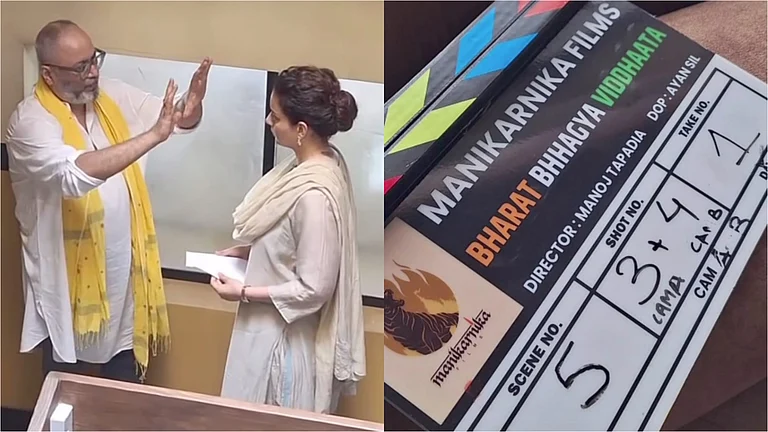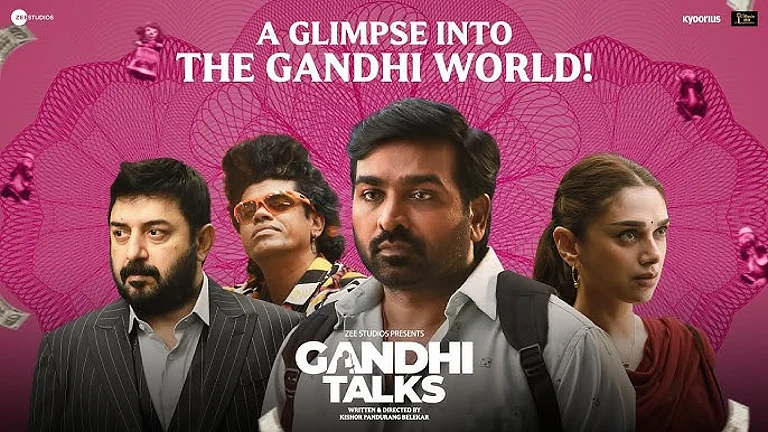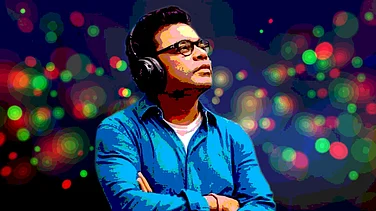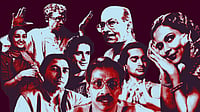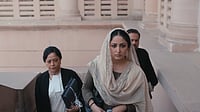Quivering lips, a wisp of white across her hair and a piping voice—Kangana Ranaut’s portrayal of Indira Gandhi in the first look of her upcoming film Emergency is a determined attempt at capturing the elusive. It fails to work though, and miserably. The larger question, however, remains: In the rich legacy of Indian politicians, why is Bollywood so fascinated with Indira Gandhi?
The only woman prime minister of India, Gandhi held the position from 1966 to 1977 and 1980 to 1984. She was the daughter of India’s first prime minister, Pandit Jawaharlal Nehru and the mother of another prime minister, Rajiv Gandhi. A dynamic personality, both revered and criticised, Gandhi helmed several dark phases of Indian history, including the National Emergency in 1975 and Operation Blue Star in 1984. She also led the country through the Sino-Indian clashes of 1967 and the 1971 war with Pakistan, which led to the independence of Bangladesh.

Perhaps the most prominent portrayal of Gandhi in Hindi cinema came in Aandhi (1975). Directed by Gulzar, it featured veteran Bengali actress Suchitra Sen playing Aarti Devi, a powerful female politician. Her character was closely modelled on Gandhi, especially her sarees and the white streak in her hair. So powerful was the resemblance, that the film had to face the ire of the government. Aandhi was banned 26 weeks after it received clearance from the Information and Broadcasting Ministry. Portions of the films had to be re-shot to emphasise that Aarti Devi’s story was not meant to represent Gandhi’s personal life.
Although Aandhi was released at a time when the political context made it controversial, the tables have turned in recent years. Gandhi’s portrayal—even in films where she is not pivotal to the narrative—has become a recurring motif in recent Bollywood movies. From Indu Sarkar (2017), PM Narendra Modi (2019), Thackeray (2019), Bell Bottom (2021) to Bhuj: The Pride of India (2021), ’83 (2021) and Sam Bahadur (2023), serious financial investment has gone into depicting the former PM in Hindi cinema. The promotions of these films have piqued the audiences’ interest about whether the filmmakers have gotten Gandhi’s personality right.
Does a BJP-led government have something to do with this recurrence? Perhaps. It is no secret that Gandhi’s deeds (and misdeeds) have stirred the right-wing regime to campaign against the Congress, of which Gandhi had been an integral part. Films like Indu Sarkar have also used the Emergency to take a jibe at the leading Opposition party.
But that still doesn’t explain the obsession with detail in Gandhi’s depictions. Amusingly, in Bell Bottom, the most talked about feature of the film wasn’t Akshay Kumar’s acting, but Lara Dutta’s prosthetic nose. Many videos floated on the Internet around the film’s release, discussing and dissecting Dutta’s laborious makeup. Avantika Akerkar has played Gandhi thrice in Thackeray, ’83 and Mission Majnu (2023), awing the audiences with her uncanny resemblance to the former PM.

In an interview, Akerkar revealed that, to get the ideal look, the makers dedicated more time to her hair and eyebrows than the prosthetics. Most actresses playing Gandhi have explained how they rehearsed Gandhi’s body language by watching her interviews. Perhaps Fatima Sana Sheikh’s re-enactment in Sam Bahadur is one of the few instances where the emphasis has been less on Gandhi’s physical appearance and more on her personal equation with Field Marshal Sam Manekshaw.
Be it her physical features or mannerisms, Bollywood’s fascination with Gandhi goes beyond larger political motivations—somewhere within it lays the aspiration to unveil the enigma that was the Iron Lady. Unfortunately, these attempts have almost always fallen flat. Most filmmakers are unable to move beyond achieving archival authenticity in her looks and explore her complex character.
In contrast, a far better character study of politicians like Jawaharlal Nehru or Sardar Patel has been offered in Hindi films. In interviews about his role as Sardar Patel in Ketan Mehta’s Sardar (1993), Paresh Rawal often expressed how it is not the prosthetics but the performance that should be faithful to the character in question.
The limited interrogation of the various shades of Gandhi could also be a symptom of Bollywood’s larger tendency to reduce its women to their physical attributions and deny more nuanced dimensions to their characters. And so, the quest for the perfect Indira continues.










